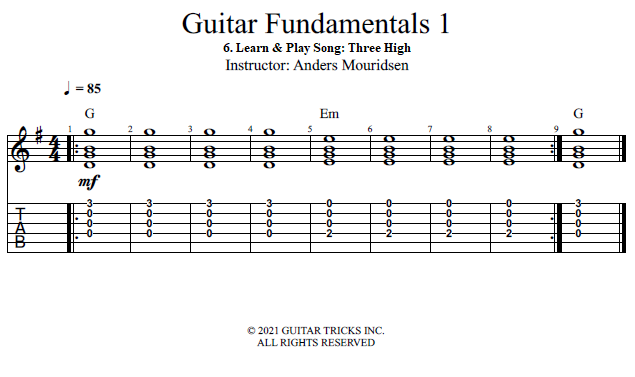Learn & Play Song: Three High
For a song example we'll do the same as before only with the 4 strings instead of 3, so after my count-in we'll strum the G-chord 4 times and then we'll strum the E minor chord 4 times. Then we'll repeat both chords and end on a G-chord that we let ring.
Here's a quick tip for the change. You don't have to let the G-chord ring out till the last possible second before you switch to E minor. Instead try to sacrifice as much of the G-chord as you need to in order to get ready to hit the E-minor chord along with me. And then the same thing going back to G again. Sacrifice some time on the E minor to be ready to hit the G-chord with me.
And the cool thing in this case is that even if you take off your fretting finger, some of the open strings will keep ringing and help bridge the gap.
Now let's try this out together. I'll count us in with the usual 4 count: 1-2-3-4. Then we'll start the example. As always it's a good idea to just watch and listen at least once before you start playing along. But it's also okay to just dive right in.
Playing guitar is not easy, but I hope this tutorial has shown you that real music making abilities are within reach. And these are not chords that are only for beginners. You will hear them played by professional guitar players in real-world musical contexts. Of course there's a big difference between the sound of someone who's just learned them versus some who've played them for a lifetime. But even if there's a lot of room to grow, chances are that what you're doing already is starting to sound like music.

- Styles:
- Any Style
- Difficulty:
-
